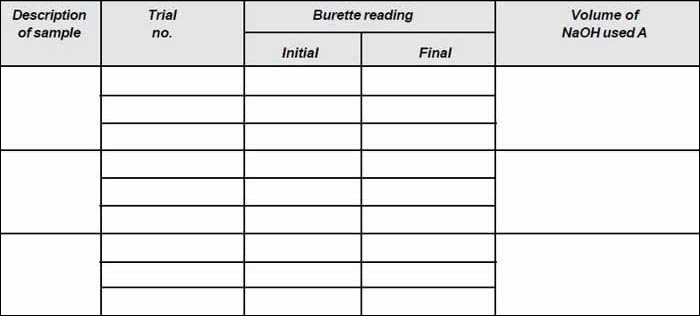Determination of Acidity of Water
To determine the acidity of the given sample of water.
Principle
Acidity of water is its quantitative capacity to neutralise a strong base to a designated pH. Strong minerals acids, weak acids such as carbonic and acetic and hydrolysing salts such as ferric and aluminium sulphates may contribute to the measured acidity. According to the method of determination, acidity is important because acid contributes to corrosiveness and influences certain chemical and biological processes. It is the measure of the amount of base required to neutralise a given sample to the specific pH.
Thus, in determining the acidity of the sample the volumes of standard alkali required to bring about colour change at pH 8.3 and at pH 3.7 are determined.
- Burette
- Pipette
- Erlenmeyer flasks
- Indicator solutions
- CO2 free water
- Standard NaOH solution 0.02N
- Methyl orange indicator solution
- Phenolphthalein indicator solution
- Sodium thiosulphate 0.1 N.
- 25 mL of sample is pipette into Erlenmeyer flask.
- If free residual chlorine is present, 0.05 mL (1 drop) of 0.1 N thiosulphate solution is added.
- 2 drops of methyl orange indicator is added.
- These contents are titrated against 0.02 N hydroxide solution. The end point is noted when colour change from orange red to yellow.
- Then two drops of phenolphthalein indicator is added and titration continued till a pink colour just develops. The volumes of the titrant used are noted down.
0.02 N NaOH Sample (Methyl orange/phenolphthalein indicator)
Acidity in mg/L as CaCO3 = A x B x 50,000 ÷ V
where,
A = mL of NaOH titrant
B = normality of NaOH
V = mL of the sample.
Results






